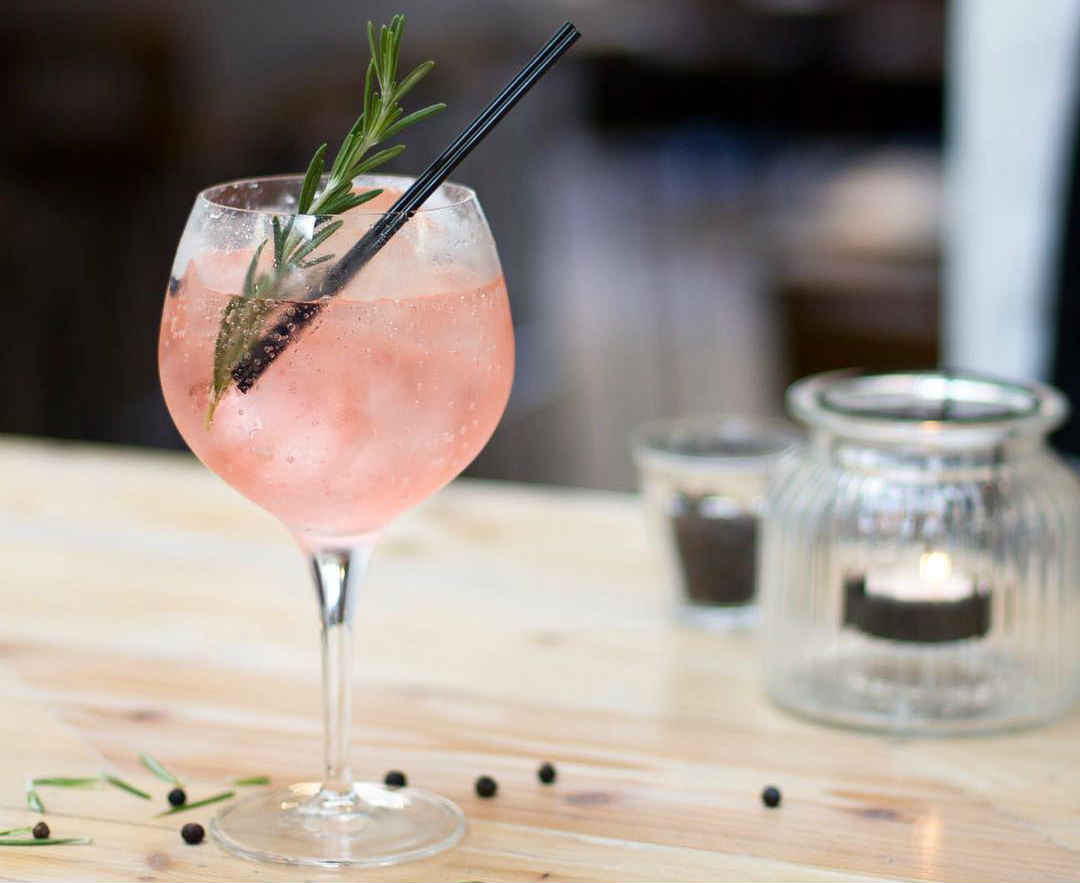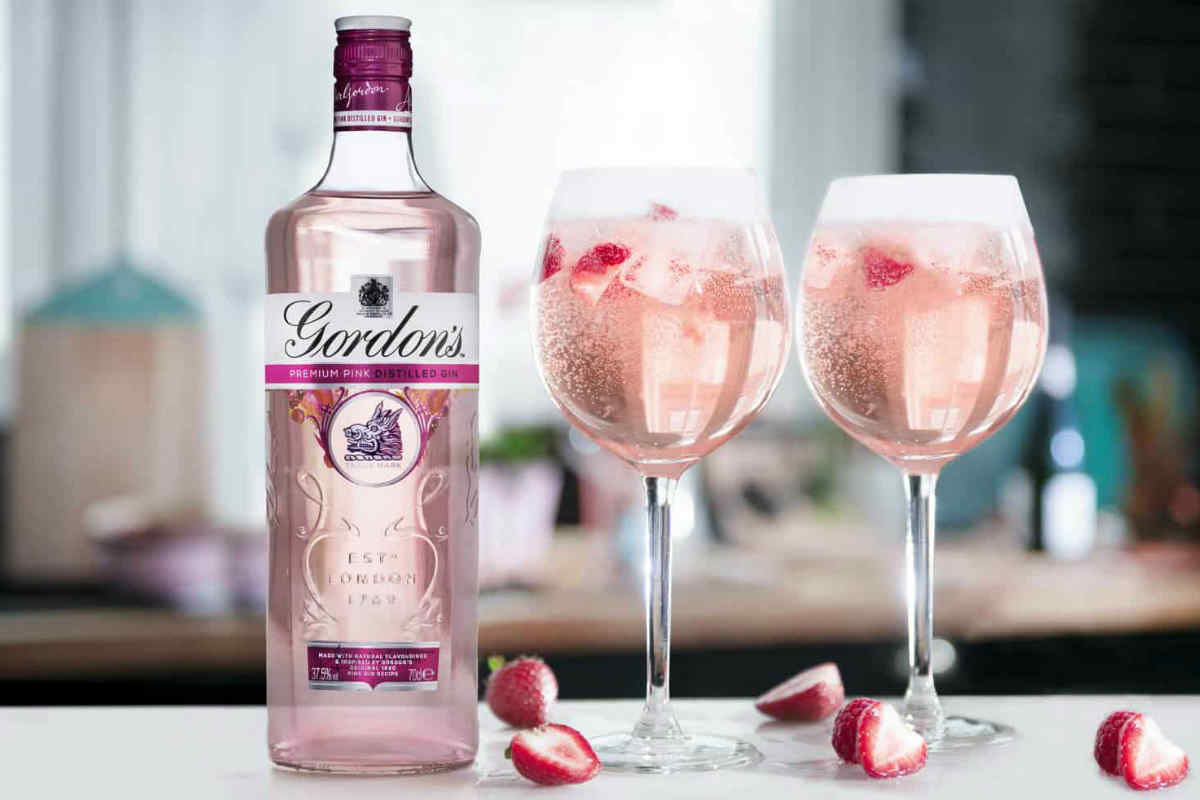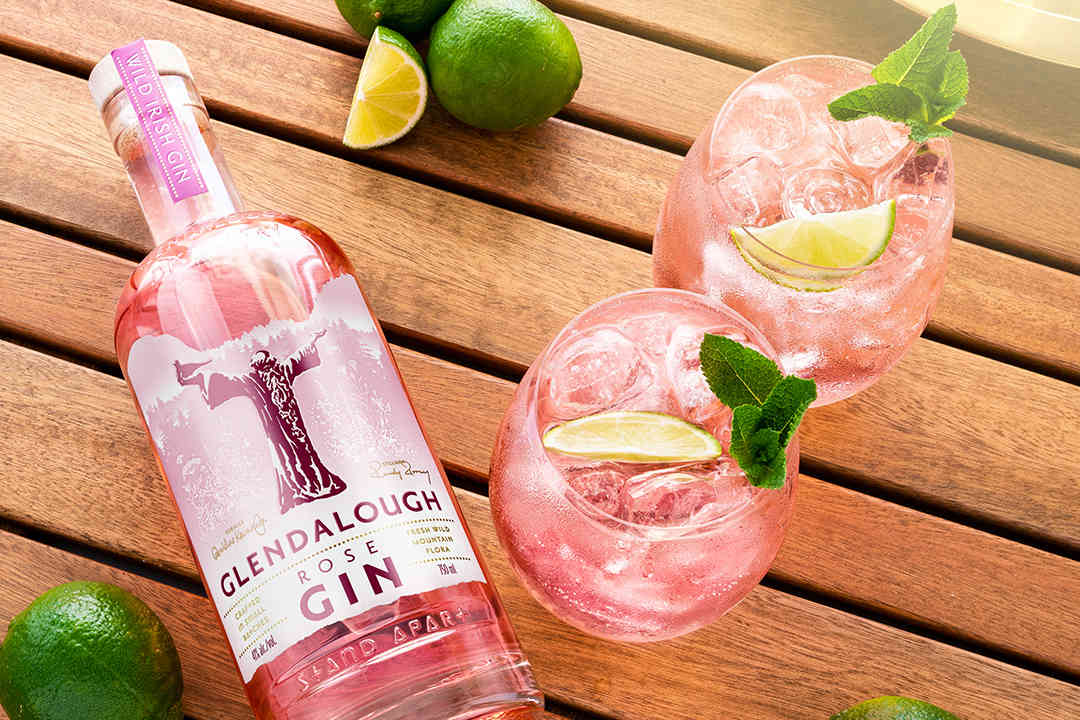Traditionally, the gin aisle has not been a riot of color. But recent years have seen pink proliferate among the normally clear bottles, like flamingos that just topped up their hue by feasting on shrimp.
At first glance, it may seem like the rosé trend—which has already conquered beer and wine—is marching into another drink category. Some of these colorful gins owe their hue to rosé wine, but others receive their tone from aromatic bitters, fruit, or even rose petals, and have little in common with one another.
Classic Pink Gin
The existence of pink gin isn’t anything new. In fact, a Pink Gin cocktail, made by adding a few dashes of aromatic bitters (typically Angostura) to Plymouth Gin was a popular drink in 19th century England. The practice is said to have begun with British sailors, who found that mixing stomach-settling Angostura Bitters with gin was a more palatable way to consume their prescribed rations.

Gin Lane 1751 / Facebook
If you happen to have Plymouth Gin, (or any London Dry) and a bottle of Angostura at hand, you can whip up one for yourself in seconds. For an even easier route, look out for one of the ready-made pink gins now on the market. Both the Victoria Pink Gin from Gin Lane 1751 and the straightforwardly-named Pink Gin by The Bitter Truth are made with aromatic bitters. Each retain a juniper-forward character redolent of London Dry, but with added spice from the bitters and the botanicals, such as the star anise used by Gin Lane and the licorice, caraway, and fennel employed by The Bitter Truth. You may not want to use either in a Martini, but each makes for a boldly flavored G&T.
The opposite approach to making a pink Gin & Tonic comes courtesy of Fever Tree, which launched an Aromatic Tonic Water in July 2018. The pink-hued tonic is made with angostura bark extract, as well as vanilla, pimento berries, ginger, and cardamom. Like the gins, the presence of angostura bark and botanicals give the tonic a spiced, lightly bitter, and licorice-like quality. Considering its built-in flavor kick, Fever Tree’s Aromatic Tonic is best paired with a plain old London Dry.
Modern Pink Gin
However, most of the pinkish gins arriving at your liquor store have little to do with Angostura bitters or angostura bark. They may owe their color to fruit, rose petals (as is the case with Glendalough’s Rose Gin), or actual rosé wine. For lack of a standard organizing principle, we’ll refer to the pink gins without a connection to historical pink gin as “modern pink gin.”

Gordon’s Pink Gin
Two of the biggest names in gin—Beefeater and Gordon’s—have gotten into the action by using fruit. Beefeater Pink relies on strawberries for a sweeter touch, while Gordon’s Pink Gin utilizes berries. But the fact that fruit has entered the conversation doesn’t mean the spirit must be sweet. In 2018 Malfy introduced their Malfy Gin Rosa expression, made with Sicilian pink grapefruit. Rather than turning sweet, this Italian-made spirit is acidic and tart.
To create its Rose Gin, Glendalough redistills its Wild Botanical Gin with Damask Roses, Heritage Roses, and Wild Irish Mountain Roses. Afterward, the gin is infused with additional rose petals to create its natural pink hue. As pleasing as the color may be, all that rose serves a purpose beyond aesthetics: the gin has a soft, floral character that contrasts beautifully with notes of juniper and pepper.
For an actual touch of every Instagrammer’s favorite summertime sip, look to the Cape Cod Rosé Gin made by South Hollow Spirits in Truro, Massachusetts. South Hollow, which shares ownership with Truro Vineyards, created this gin by blending their Dry Line Gin with a 35 percent portion of California Grenache rosé (on the label, it’s defined as “gin with grape wine added”). The blending makes it softer than most gins, at just 70 proof, and its taste profile puts rosé front and center, with juniper as a finishing touch on the palate’s back end. Sipped neat, the experience is almost close to that of drinking a brandy.
Speaking of which: has anyone thought of a rosé brandy yet?



